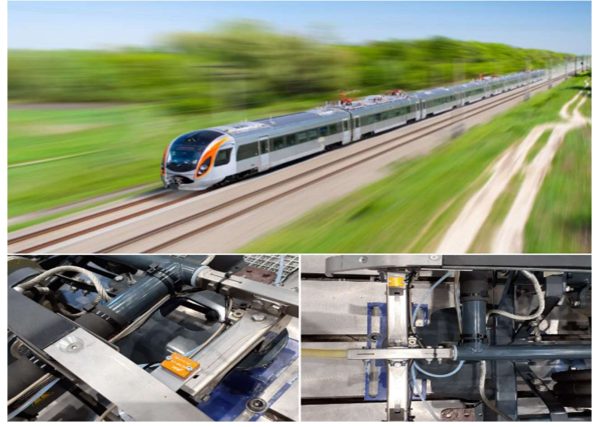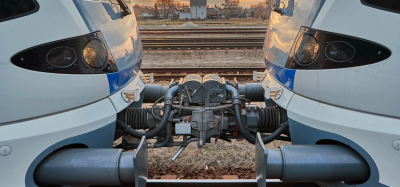CETEST and ASC Sensors drive innovation in rail testing with advanced accelerometers and gyroscopes
Posted: 23 April 2025 | Gabriel Higgins | No comments yet
CETEST partners with ASC Sensors to enhance rail testing accuracy, using robust accelerometers and gyroscopes for high-speed, comfort, and safety evaluations.


ASC Sensors’ inertial sensor solutions are enabling Spanish testing centre CETEST to overcome critical measurement challenges and provide industry-leading monitoring services globally. Based in northern Spain and accredited to ISO17025, CETEST offers advanced engineering, testing and monitoring services. With a 30-year legacy in railway evaluation, it supports global rail manufacturers such as Alstom, CAF, Hitachi, Siemens and Stadler through regulatory approvals for new and refurbished vehicles, systems and components.
Driving rail innovation through precision testing and advanced sensor technology
In 2010, CETEST expanded into the aeronautics and wind power sectors. Its ongoing investment in R&D, technology, and expert partners ensures cutting-edge service offerings. Among its core competencies is pantograph and overhead line interaction testing—critical for validating rolling stock and infrastructure designs, especially at speeds over 350 km/h.
ASC’s uniaxial ASC 4421MF accelerometers are integral in testing pantograph performance and train ride dynamics. Based on MEMS technology, the sensors offer a measurement range of 2–200 g and a frequency response up to 7 kHz. Their robust IP67-rated aluminium housing, shock resistance (up to 6,000 g), and resistance to electromagnetic interference make them ideal for extreme environments.
Carlos Carmuega Tena, CETEST’s Quality Director, explains: “Amongst other applications, we’re using ASC’s accelerometers in a special precision instrumentation system for pantograph contact force testing at train speeds exceeding 350 km/h.” Positioned between pantograph body and contact strip, the sensors withstand high heat, voltage and harsh NVH (noise, vibration, harshness) conditions.
The ASC 4421MF’s compact design and aerodynamic compliance allow for easy installation in confined spaces, critical for tests conforming to standard EN50317. CETEST had previously faced issues with sensor durability under high voltage; ASC’s technology resolved these, maintaining signal quality despite challenging external factors.
Initially sourced for pantograph testing, the sensors are now also used in ride comfort and dynamic behaviour testing. Their compatibility with CETEST’s existing systems, plus competitive pricing and fast delivery, further enhanced their appeal. For ISO2631 and EN12299 ride comfort assessments, sensors measure vertical, lateral and longitudinal movements inside carriages.
For EN14363 dynamic behaviour analysis, sensors are mounted internally and externally, including on bogies and axle boxes. The ASC 4421MF’s wide measurement range supports this varied use. CETEST deploys up to 50 sensors per train for tests covering acceleration, braking and operational anomaly detection.
Gyroscopes also play a role. ASC’s triaxial ASC 273 gyroscopes help determine curve radii for certification purposes. These MEMS-based sensors, with measuring ranges from 75 to 900 °/s, combine with train speed and accelerometer data to calculate compliant curve behaviours.
Carmuega Tena says: “To get approved for active service, a new train model needs to pass each of these curve tests, at various defined curve radii, speeds and accelerations.”
To ensure test accuracy, CETEST uses ASC’s QF-1211 MEMS accelerometers as calibration references. With resolutions under 1 µg and self-testing functions, they excel in high-vibration environments and meet seismic monitoring standards.
In 2024, CETEST also began using quartz-based JA-40GA accelerometers from Japan Aviation Electronics (JAE), provided via ASC. These sensors are employed in curve behaviour analysis at axle-box level, where forces reach up to 100 g. The servo-balanced design enables precise detection of lateral accelerations as low as 1 m/s².
“While we used to experience a lot of difficulties with previous suppliers… JAE’s accelerometers provided and serviced by ASC Sensors turned out to meet our demanding requirements,” adds Carmuega Tena. These sensors maintain performance across -20 to +70 °C and support low-frequency operations.
Beyond product performance, CETEST values ASC’s consultative approach. “When I ask for a sensor, they ask me for the application… they typically come back with tailor-made recommendations,” he says. What began as a solution to electrical interference has evolved into a dynamic partnership, driving innovation in transport sector testing.
Stay Connected with Global Railway Review — Subscribe for Free!
Get exclusive access to the latest rail industry insights from Global Railway Review — all tailored to your interests.
✅ Expert-Led Webinars – Gain insights from global industry leaders
✅ Weekly News & Reports – Rail project updates, thought leadership, and exclusive interviews
✅ Partner Innovations – Discover cutting-edge rail technologies
✅ Print/Digital Magazine – Enjoy two in-depth issues per year, packed with expert content
Choose the updates that matter most to you. Sign up now to stay informed, inspired, and connected — all for free!
Thank you for being part of our community. Let’s keep shaping the future of rail together!
Related topics
Cyber-Security, Digital Twins, Noise & Vibrations, Passenger Experience/Satisfaction, Rolling Stock Maintenance, Signalling, Control & Communications, Technology & Software
Related organisations
Alstom, ASC Sensors, CAF, CETEST, Hitachi, ISO, Japan Aviation Electronics (JAE), Siemens, Stadler







